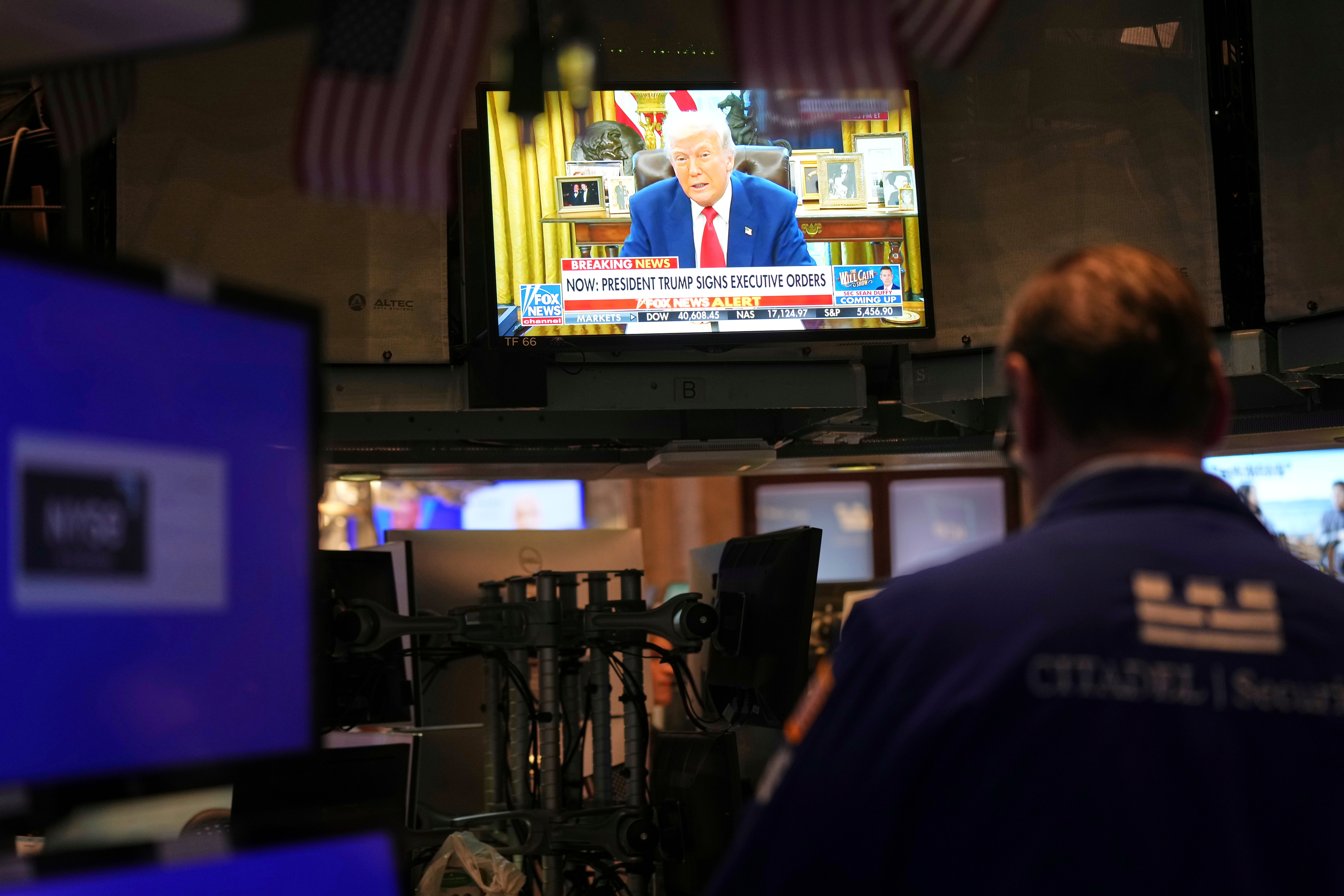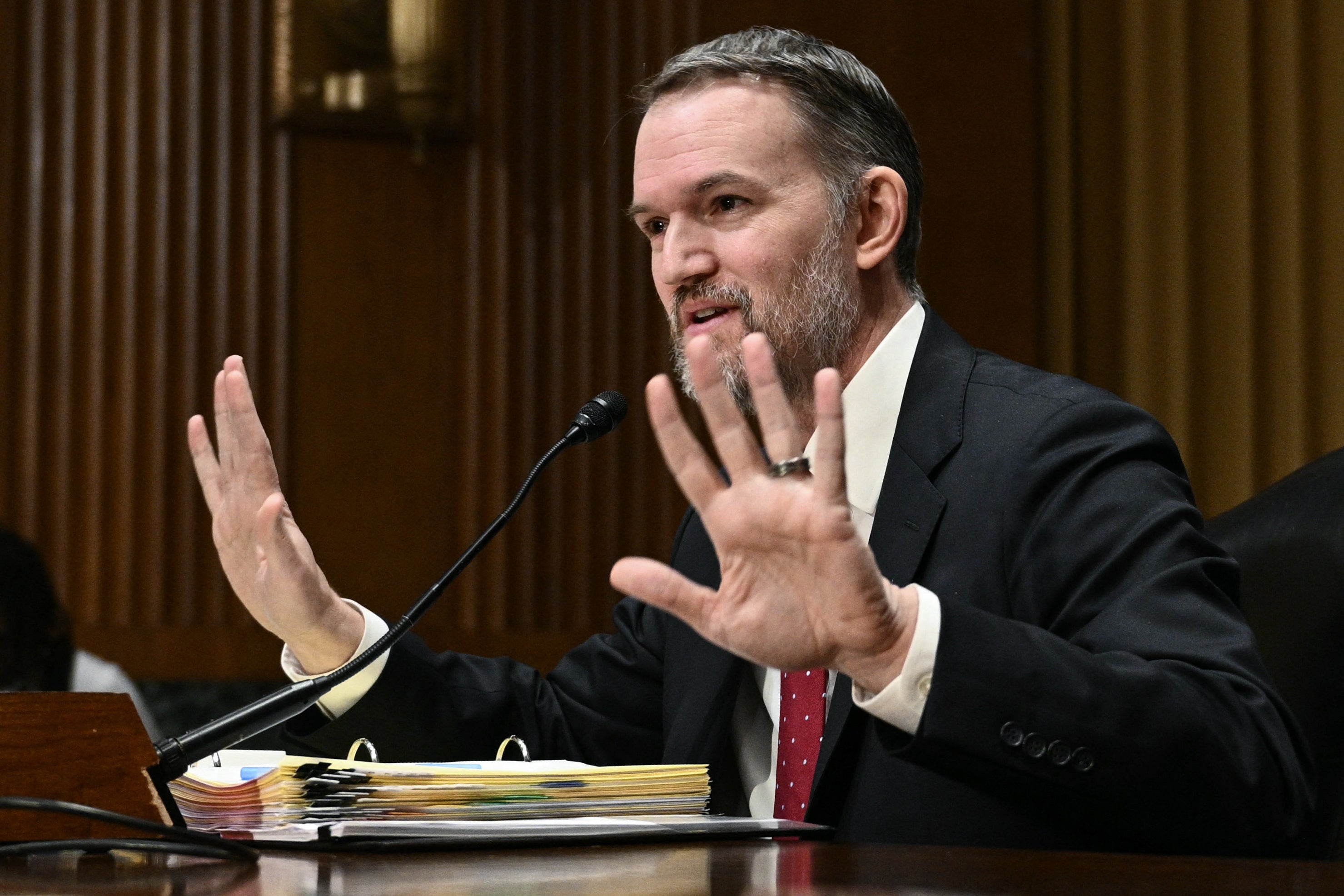Stock markets around the world nosedived on Monday after traders, businesses and economies reacted to Donald Trump’s ‘liberation day’ announcement of higher tariffs on nearly every U.S. trading partner.
By Tuesday, trillions had been wiped from the value of global stock markets in response. Trump initially stuck to his guns, saying: “THIS IS A GREAT TIME TO BUY!!!” less than 10 minutes after the opening bell rang on the New York Stock Exchange on Wednesday.
But within a few hours he reversed course, announcing there would be a 90-day pause on the reciprocal tariffs for 75 countries because people were getting “a little bit afraid”.
After that dramatic pivot, stock markets rebounded. It didn’t take long for social media to erupt with accusations that the president had played a reverse “pump and dump” scheme with the American economy, while Democrats accused him of market manipulation.
So what is market manipulation exactly, and why is it considered a serious act?
What is market manipulation?
The most basic definition of market manipulation is that it is a deliberate attempt to meddle with the operation of the open market.
That manipulation creates artificial prices - either over or undervaluing a tradable financial asset - and it is largely prohibited by financial regulators around the world.
Incorrect share prices can affect a company’s ability to raise further capital. It can also allow people to buy in at artificially low prices if such manipulation is done on purpose
If the stock market as a whole is affected, then that has knock-on effects on the broader economy, including interest rate settings.
How does it work?
Two common ways to manipulate the market are through trading or making false statements.
Manipulating a market through trading sends misleading signals about the popularity or value of a company’s shares.
That could include schemes such as a CEO buying a lot of stock in their own company, to force up prices.
Misleading statements could involve deliberately overstating the value of a company, which would pump up prices, or by talking the company or stock market down, leading to sell-offs.
While prohibited, market manipulation can be difficult to prove, as a single person buying or selling a few extra shares or making misleading comments does not generally have the power to shift markets.

What is a “pump and dump”?
A “pump and dump” scheme is a complex market manipulation strategy that usually targets one security (a stock or bond).
Promoters of such a scheme send out false or misleading information about the security to millions of retail investors in a bid to drive up prices - this is the “pump”.
When the stock reaches a target level, the perpetrators sell their shares - the “dump” - at the artificially elevated prices, leaving the investors holding a stock that will fall in value.
The U.S. president has been accused of doing a reverse “pump and dump” with his trade war.
So instead of talking a stock up, the accusation is that his tariff hikes and hardline stance on world trade with the U.S. talked global stocks down, allowing people to buy when markets were low before reversing course and sending stock prices shooting back up.
The government has denied any wrongdoing.

Trump’s message ‘raises questions’, expert says
Trump is facing serious accusations from his political rivals over the tariff changes. Democratic Senator Adam Schiff said these huge trade policy changes “provide dangerous opportunities for insider trading” and has called for an investigation.
Economics experts have also shared their concerns.
Dan Coatsworth, an investment analyst at AJ Bell, said the president's message saying “‘This is a great time to buy!!! DJT” and pausing tariffs shortly after “raises questions given it was clear how markets would react to such news”.
“Rumours of a 90-day pause earlier this week triggered a sharp rally before the White House rubbished the speculation – that market reaction was effectively a dress rehearsal for the big event we saw last night on Wall Street and today across European markets,” he told The Independent.
“If Trump knew a tariff pause announcement was scheduled for later in the day when he made that social media post, it’s questionable whether it was appropriate to post that on social media ahead of an official announcement.”

Mr Coatsworth said it was also noteworthy that the president included “DJT” in his social media post, as it is the stock market code for his media business.
“One could interpret the DJT reference as simply being his initials and a way to sign off a post, and he’s done that in the past. Even still, you can’t ignore the first part of his message,” he said.
U.S. Trade Representative Jamieson Greer denied the government was manipulating the market in a House of Representatives hearing on Wednesday.
“It’s not market manipulation,” he said. “We’re trying to reset the global trading system.”
What has Trump said?
When asked why he backflipped on his tough tariffs and largely paused their introduction for 90 days, he said: “I thought that people were jumping a little bit out of line”.
Trump said he had been watching the bond market which had been “very tricky” after his announced tariffs.
“I was watching it, but if you look at it now, it’s — it’s beautiful. The bond market right now is beautiful. But, yeah, I saw last night where people were getting a little queasy,” he said.
He added: “The big move wasn't what I did today. The big move was what I did on Liberation Day.”
On Thursday morning, Trump said: “What a day, but more great days coming!!!”







